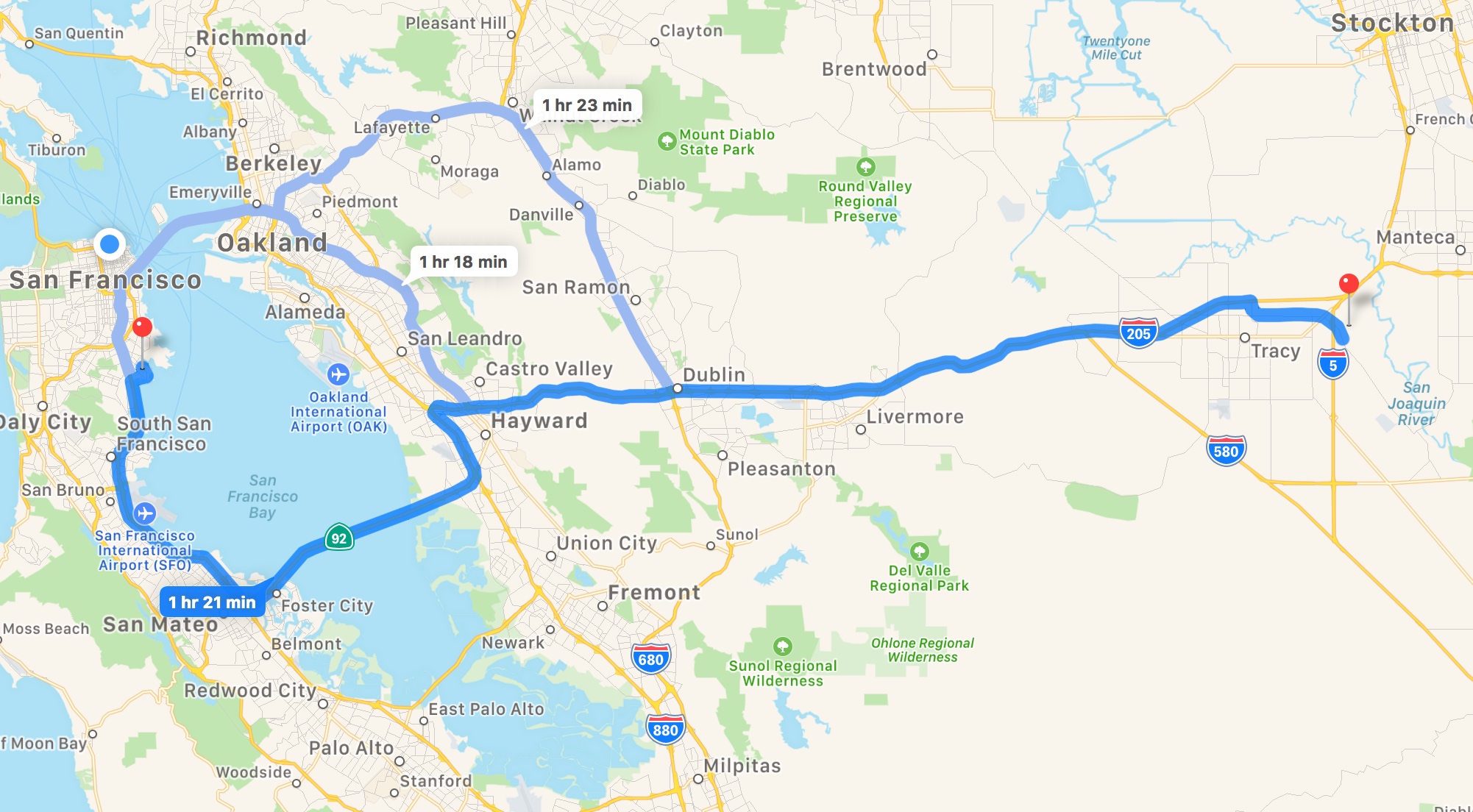Safety first
Being a TV reporter these days can be a risky proposition. The stories of crews having their equipment stolen are all too common. So, all the stations in the Bay Area have decided when a potentially dangerous story needs to be covered, the crew will be accompanied by an armed guard.
Julio is the armed security guard who accompanied me on the homicide story. He's a former Bay Area police officer. He stuck with me for every second I was out on the scene shooting video and conducting interviews.
Today's story was about an early morning homicide. I was immediately assigned a guard - zero hesitation. The station was so concerned about the neighborhood where I was going, the managers told me: "Don't meet him at the crime scene. Pick a spot ahead of time so you can drive in together." When we arrived, there was another guard there waiting for a crew from a competing station. Later, a third station showed up - and it, too, had a guard.
We learned the homicide victim may have been a security guard on patrol. That's the newsworthy element, and fits the first of three criteria I tell my students to look for in story ideas:
- So what (what difference does it make): if the crime is so bad it's not even safe for security guards, you've definitely got a story.
- Real people (the people living the story): the people in the neighborhood who may have known the victim.
- Show me, don't tell me (video): we had video of the police securing and investigating the crime scene from a morning crew, which was good because by the time we got there at 11 a.m., all the police had left and there was barely a trace of the homicide.
I conducted several interviews and was striking out on the human element of someone who knew the potential victim. The story wasn't really going to amount to much, when the station called at 1:30 p.m. and switched me to a different story, in Tracy. The state prison there built a $32 million water treatment facility eight years ago to serve the prisoners and staff. But it broke. Since October, the state has spent more than $40,000 a month (Whose money is it? Taxpayer money.) on bottled water. Now there's a story.
So I dropped what I was doing and went to Tracy. This is part of the deal in TV news - if you have to switch the story, you switch the story. It doesn't matter how much work you've already done or how far you have to drive or how close it puts you to deadline. You fulfill your role in the newscast.
One thing that made the story switch go more smoothly was that videographer Alex Montano was sent to the scene ahead of me. He tried to drive onto the prison property to shoot video but was immediately rebuffed. So instead of driving onto the property to shoot the water treatment plant, he flew over it. As one of about 10 licensed drone pilots at KPIX, Alex was able to get the video we needed for the story, even though we couldn't get close to the story. Drones are changing the way news crews cover stories. Sometimes drone video is about a cool, different angle. Today it was about getting the video that otherwise would not have been possible to shoot. You can see the shots in The Story below.
KPIX drone operator Alex Montano getting video of the water treatment plant in Tracy.
The KPIX 5 drone in operation, as seen from the view of the subject being shot - me.
Another example of how unpredictable a TV news day can be.
Takeaways:
- Safety first. Don't be afraid to cover a story, just be prepared.
- As a member of the news team, you may have to drop what you've done so far and switch to something else. Do it with a smile.
- Drones are changing how, and sometimes whether, we tell stories.


